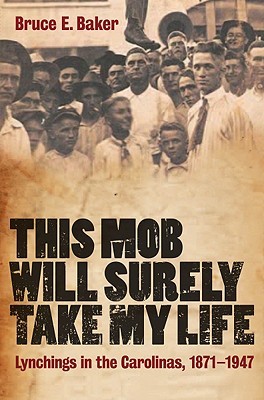
- We will send in 10–14 business days.
- Author: Bruce E Baker
- Publisher: Continuum
- Year: 2008
- Pages: 256
- ISBN-10: 1847252389
- ISBN-13: 9781847252388
- Format: 16.6 x 24 x 2.3 cm, kieti viršeliai
- Language: English
- SAVE -10% with code: EXTRA
Reviews
Description
This book traces the history of mob violence in North and South Carolina, probing the origins of a phenomenon that has left an open wound in the American psyche.
Lynching marked the violent outer boundaries of race and class relations in the American South between Reconstruction and the civil rights era. Everyday interactions could easily escalate into mob violence and did so thousands of times. Bruce E. Baker examines this important aspect of American history by studying seven lynchings in North and South Carolina and looking behind the superficial accounts and explanations provided at the time to explain the deeper causes and wider contexts of these events.
EXTRA 10 % discount with code: EXTRA
The promotion ends in 23d.09:16:49
The discount code is valid when purchasing from 10 €. Discounts do not stack.
- Author: Bruce E Baker
- Publisher: Continuum
- Year: 2008
- Pages: 256
- ISBN-10: 1847252389
- ISBN-13: 9781847252388
- Format: 16.6 x 24 x 2.3 cm, kieti viršeliai
- Language: English English
This book traces the history of mob violence in North and South Carolina, probing the origins of a phenomenon that has left an open wound in the American psyche.
Lynching marked the violent outer boundaries of race and class relations in the American South between Reconstruction and the civil rights era. Everyday interactions could easily escalate into mob violence and did so thousands of times. Bruce E. Baker examines this important aspect of American history by studying seven lynchings in North and South Carolina and looking behind the superficial accounts and explanations provided at the time to explain the deeper causes and wider contexts of these events.


Reviews